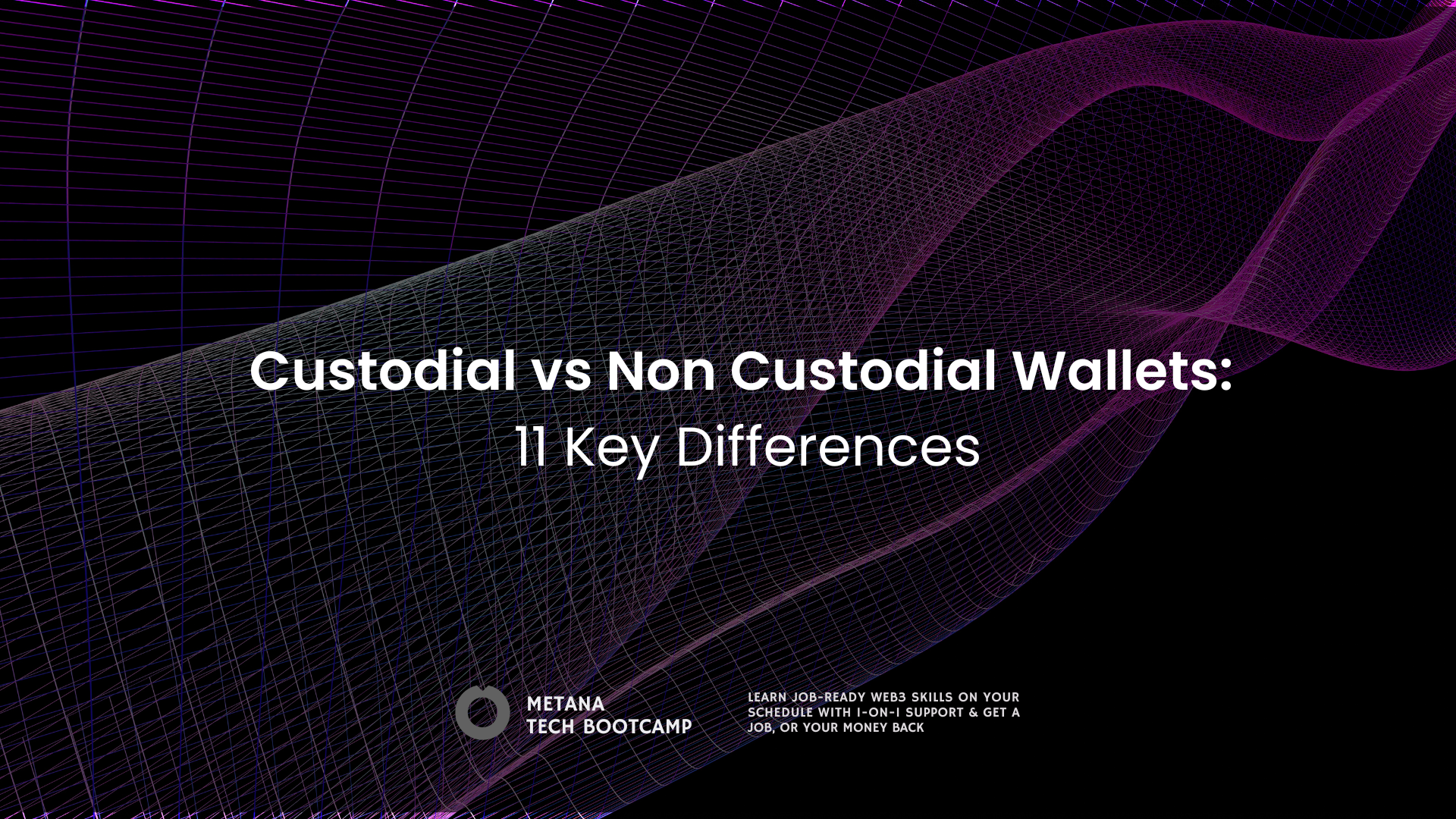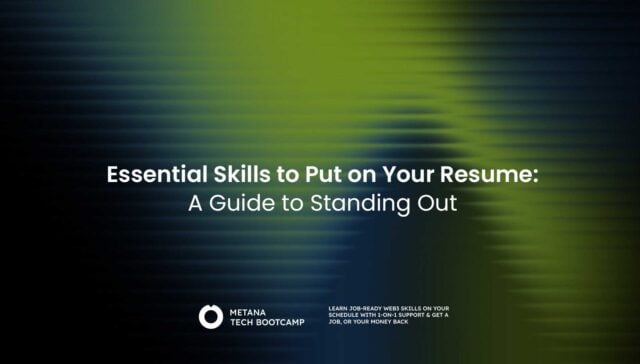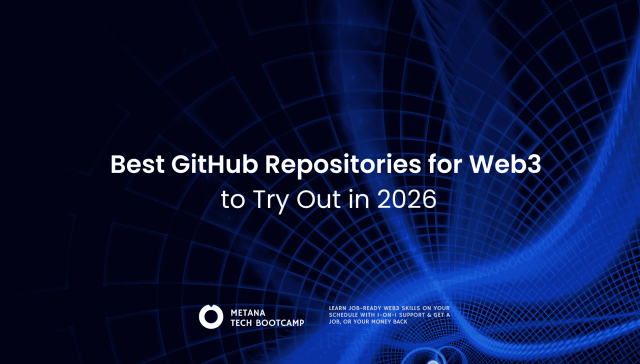Quick Takeaways
- Private key control defines the fundamental difference between custodial and non custodial wallets, determining who has ultimate access to your cryptocurrency
- Custodial wallets offer convenience and recovery options but require trusting third parties with your digital assets
- Non custodial wallets provide complete ownership and control but place full responsibility for security on the user
- Security trade-offs exist in both wallet types, with custodial wallets vulnerable to exchange hacks and non custodial wallets susceptible to user error
- Regulatory compliance requirements differ significantly, with custodial wallets subject to KYC/AML regulations while non custodial options offer greater privacy
- Use case optimization suggests using both wallet types strategically and custodial for active trading and non custodial for long-term storage
- Recovery mechanisms vary dramatically: custodial wallets allow password resets while non custodial wallets require users to safeguard seed phrases independently
When you enter the cryptocurrency ecosystem, choosing between custodial vs non custodial wallets fundamentally shapes your relationship with digital assets. This decision affects everything from security and convenience to privacy and control.
Unlike traditional banking where institutions uniformly manage funds, cryptocurrency wallets operate under two distinct philosophies. Understanding these differences isn’t just technical knowledge; it’s essential to protecting your investment and aligning your storage solution with your goals.
In this guide, we’ll explore the 11 key differences between custodial and non custodial wallets, examine real-world examples, and help you determine which option best suits your needs in 2025.
What Are Custodial Wallets?
Custodial wallets are cryptocurrency storage solutions where a third-party service provider typically a cryptocurrency exchange or financial platform manages and controls your private keys on your behalf.
Think of custodial wallets as the crypto equivalent of traditional bank accounts: the institution holds your assets and provides access through username and password credentials.
How Custodial Wallets Work
When you create an account on platforms like Coinbase, Binance, or Kraken, you’re using a custodial wallet. The exchange generates and stores your private keys in their secure infrastructure. You don’t directly interact with these keys; instead, you access your funds through the platform’s interface, similar to online banking.
The custodian manages all cryptographic operations behind the scenes, including transaction signing and security protocols. This abstraction layer makes cryptocurrency accessible to beginners but introduces counterparty risk you’re trusting the platform to safeguard your assets and provide access when needed.
Popular Custodial Wallet Examples
Several reputable custodial wallet providers serve millions of users worldwide:
- Coinbase: Known for regulatory compliance and insurance coverage in the US market
- Binance: The world’s largest exchange by trading volume, offering integrated wallet services
- Kraken: Emphasizes institutional-grade security with multi-factor authentication
- Crypto.com: Combines custodial storage with crypto debit cards and rewards programs
- Gemini: Regulated platform prioritizing security and transparency
What Are Non Custodial Wallets?
Non custodial wallets (also called self-custody or self-custodial wallets) give users complete control over their private keys, eliminating third-party intermediaries. With non custodial wallets, you become your own bank enjoying full sovereignty over your digital assets while accepting complete responsibility for their security.
How Non Custodial Wallets Function
Non custodial crypto wallets generate private keys on your device, which never leave your control unless you explicitly share them. These wallets interface directly with blockchain networks, allowing you to sign transactions independently without requiring permission from any centralized authority.
When you set up a non custodial wallet, you receive a seed phrase (also called a recovery phrase or mnemonic phrase) typically 12 to 24 words that serve as the master key to your wallet. This phrase can regenerate your private keys if you lose device access, making it the most critical element of non custodial wallet security.
Types of Non Custodial Wallets
Non custodial wallets come in several forms, each offering different balances of security and convenience:
Hardware Wallets (Cold Storage) Physical devices like Ledger Nano X and Trezor Model T store private keys offline, providing maximum security. These represent the gold standard for long-term cryptocurrency storage, as they’re immune to online attacks when disconnected from the internet.
Software Wallets (Hot Wallets) Applications like MetaMask, Trust Wallet, and Exodus run on internet-connected devices. While more convenient for frequent transactions, they’re more vulnerable to online threats than hardware wallets.
Mobile Wallets Smartphone apps such as Trust Wallet and Zerion Wallet combine portability with user-friendly interfaces, making them popular for everyday crypto management and decentralized application interaction.
Desktop Wallets Computer-based applications like Electrum and Exodus offer robust features for portfolio management while maintaining user control over private keys.
Browser Extension Wallets Tools like MetaMask and Phantom operate as browser plugins, facilitating seamless interaction with decentralized finance platforms and Web3 applications.
11 Key Differences Between Custodial and Non Custodial Wallets
1. Private Key Control and Ownership
The most fundamental difference lies in who controls your private keys. With custodial wallets, the service provider holds your keys and you’re essentially renting access to your cryptocurrency. Non custodial wallets put you in complete possession, embodying the crypto ethos: “not your keys, not your coins.”
This distinction determines your actual ownership. When using Coinbase’s custodial wallet, Coinbase technically has the ability to access or freeze your funds. With a Ledger hardware wallet, you’re the sole entity capable of authorizing transactions.
2. Security Responsibility and Risk Models
Custodial wallet security depends on the provider’s infrastructure. Major exchanges employ dedicated security teams, cold storage solutions, and insurance policies. However, they present attractive targets for hackers—the 2014 Mt. Gox hack resulted in $450 million in losses, while Bitfinex lost approximately $72 million in 2016.
Non custodial wallet security shifts responsibility entirely to you. While immune to exchange hacks, non custodial wallets expose you to different risks: device theft, malware, phishing attacks, and user error. Studies indicate that lost private keys account for approximately 20% of all Bitcoin, representing billions in permanently inaccessible cryptocurrency.
3. Recovery and Access Restoration
Custodial wallets offer familiar password recovery mechanisms. If you forget your Binance password, customer support can verify your identity and restore access through email confirmation or other verification methods.
Non custodial wallets provide no safety net. Lose your seed phrase, and your cryptocurrency becomes permanently inaccessible—no customer service can help. This permanence has created a cottage industry of data recovery specialists attempting to crack lost passwords, though success rates remain low.
4. Privacy and Anonymity Levels
Custodial wallet privacy is limited. Exchanges must comply with Know Your Customer (KYC) and Anti-Money Laundering (AML) regulations, requiring identity verification, transaction monitoring, and potential reporting to authorities. Your transaction history becomes part of the exchange’s database.
Non custodial wallet privacy varies but generally exceeds custodial options. Many non custodial wallets require no personal information for creation or use. While blockchain transactions remain transparent, your identity isn’t necessarily linked to your wallet address unless you choose to connect it to KYC-verified services.
5. Transaction Speed and Convenience
Custodial wallets excel in user experience. Transactions occur within the exchange’s internal ledger, often settling instantly without blockchain confirmation. Interface design prioritizes accessibility, with streamlined processes for buying, selling, and trading.
Non custodial wallets require more steps. Each transaction must be broadcast to the blockchain, waiting for network confirmation. Hardware wallets add physical device connection requirements. However, this slight inconvenience comes with the benefit of direct blockchain interaction and complete control.
6. Regulatory Compliance Requirements
Custodial platforms operate under strict regulatory oversight. In the United States, they require money transmitter licenses; in Europe, they must comply with MiCA (Markets in Crypto-Assets) regulations. This means mandatory identity verification, transaction limits, and potential account freezes for regulatory reasons.
Non-custodial wallet providers face minimal regulatory requirements because they don’t take custody of user assets. You can create and use most non custodial wallets without identity verification, though connecting them to regulated services (like centralized exchanges) may require KYC compliance at that integration point.
7. Asset Recovery and Backup Options
Custodial services handle backup automatically. Your account exists on their servers, accessible from any device with proper credentials. This redundancy protects against individual device failure.
Non custodial wallets require manual backup procedures. You must securely store your seed phrase, ideally in multiple physical locations. Many experienced users employ metal backup plates to protect against fire and water damage, creating disaster-resistant storage solutions.
8. Cost Structure and Fees
Custodial wallet costs typically include trading fees, withdrawal fees, and sometimes monthly service charges. However, the wallet itself is free to create. Some custodial platforms even cover network transaction fees for internal transfers between users.
Non custodial wallet costs vary significantly. Software wallets are typically free, while hardware wallets require upfront purchase. However, non custodial wallets don’t impose platform fees, you only pay blockchain network fees (gas fees) for transactions.
9. Multi-Currency Support and Flexibility
Both wallet types support multiple cryptocurrencies, but with different approaches. Custodial exchanges add supported assets at their discretion, prioritizing popular and liquid cryptocurrencies. You’re limited to their offering.
Non custodial wallets often provide broader support, particularly for newer or niche tokens. Wallets like MetaMask can interact with any Ethereum-compatible token, while hardware wallets like Ledger support over 5,000 different assets through various companion apps.
10. DeFi and dApp Integration
Custodial wallet limitations become apparent in decentralized finance. Most custodial exchanges don’t allow direct interaction with DeFi protocols, smart contracts, or decentralized applications. You can hold tokens but miss out on staking, yield farming, and NFT minting opportunities.
Non custodial wallets enable Web3 participation. Browser extensions like MetaMask seamlessly connect to Uniswap, Aave, OpenSea, and thousands of other decentralized applications. This direct blockchain interaction unlocks the full potential of crypto beyond simple buying and holding.
11. Withdrawal Limits and Access Control
Custodial platforms impose withdrawal restrictions: daily limits, waiting periods for large amounts, and sometimes geographic restrictions. During periods of high volatility or technical issues, some exchanges temporarily suspend withdrawals entirely.
Non custodial wallets provide unrestricted access to your funds 24/7. No institution can prevent you from accessing or moving your cryptocurrency. This freedom comes with responsibility and you must ensure you’re not inadvertently sending funds to incorrect addresses, as blockchain transactions are irreversible.
Custodial vs Non Custodial Wallets: Comprehensive Comparison Table
| Feature | Custodial Wallets | Non Custodial Wallets |
|---|---|---|
| Private Key Control | Held by third party | User controls keys |
| Security Responsibility | Platform handles security | User responsible for security |
| Setup Complexity | Simple, like creating email | Requires understanding of seed phrases |
| Password Recovery | Available through support | Impossible without seed phrase |
| KYC Requirements | Usually required | Not required for wallet creation |
| Transaction Speed | Often instant (internal) | Depends on blockchain confirmation |
| Fees | Platform fees + network fees | Only network fees |
| DeFi Access | Limited or none | Full access |
| Regulatory Compliance | Subject to government oversight | Minimal regulation |
| Customer Support | Available | None |
| Withdrawal Limits | Often imposed | None |
| Asset Seizure Risk | Possible by authorities or platform | Nearly impossible without seed phrase |
Real-World Use Cases and Scenarios: Custodial vs Non-Custodial Wallet
Scenario 1: College Student Starting with Crypto
Profile: $500 to invest, first-time crypto user, wants to learn
Recommendation: Begin with Coinbase custodial wallet. The platform’s educational content, intuitive interface, and recovery options provide the gentlest introduction. After gaining experience, transition significant holdings to hardware wallet while keeping active trading amounts on the exchange.
Scenario 2: Active Day Trader
Profile: $50,000 portfolio, multiple daily trades, monitors markets constantly
Recommendation: Use custodial exchange wallet (Binance or Kraken) for trading capital. The instant execution and integrated tools optimize trading efficiency. Consider keeping 20-30% in hardware wallet as a security buffer against exchange risks.
Scenario 3: Long-Term Bitcoin Holder
Profile: Accumulated 2 BTC over several years, no intention to sell
Recommendation: Transfer holdings to Coldcard or Trezor hardware wallet immediately. Long-term storage requires maximum security, and hardware wallets eliminate the counterparty risk inherent in exchange custody. Create redundant seed phrase backups in geographically separated locations.
Scenario 4: DeFi Yield Farmer
Profile: Actively provides liquidity, farms yields, participates in DAO governance
Recommendation: Non custodial software wallet (MetaMask) is essential. DeFi participation requires direct smart contract interaction impossible through custodial platforms. Consider hardware wallet integration for added security on high-value positions.
Finally
The choice between custodial vs non custodial wallets defines your cryptocurrency experience. Custodial wallets offer convenience and recovery options at the cost of counterparty risk. Non custodial wallets provide complete ownership and Web3 access while demanding technical competence and security responsibility.
Consider strategic allocation: use custodial wallets for active trading and small amounts, while securing long-term holdings in non custodial hardware wallets. This balanced approach optimizes both security and usability.
As you grow crypto holdings and expertise, gradually shift toward greater self-custody. Start with custodial platforms to learn fundamentals, then secure significant holdings in hardware wallets when ready.
Ready to take control of your crypto security? Evaluate your holdings, transaction patterns, and technical comfort level, then implement the wallet strategy aligning with your unique situation.
Frequently Asked Questions
Q: Can I convert between custodial and non custodial wallets?
A: Yes, easily. You can transfer cryptocurrency from custodial exchange wallets to non custodial wallets by initiating a withdrawal from the exchange to your self-custody wallet address. The reverse works similarly—send from your non custodial wallet to your exchange deposit address. Always send small test amounts first to verify address accuracy, as blockchain transactions are irreversible.
Q: Is it legal to use non custodial wallets?
A: Yes, using non custodial wallets is legal in most countries. Self-custody itself isn’t regulated because providers don’t control user assets. However, specific activities (earning income, capital gains) remain subject to tax laws regardless of wallet type. Some jurisdictions have proposed increased scrutiny of non custodial wallet transactions, but the wallets themselves remain legal. Always comply with local tax regulations for cryptocurrency transactions.
Q: Which option is safer for long-term crypto storage?
A: Non custodial hardware wallets are significantly safer for long-term storage. They eliminate counterparty risk, exchange bankruptcy exposure, and hacking vulnerabilities that affect custodial platforms. Hardware wallets like Ledger or Trezor keep private keys offline in cold storage, making them virtually immune to online attacks. For holdings you plan to keep for years, the security benefits far outweigh the slight inconvenience. The only risk is losing your seed phrase, which proper backup procedures mitigate.
Q: How do custodial wallet insurance policies work?
A: Custodial wallet insurance varies significantly by provider. Coinbase, for example, maintains crime insurance covering theft and security breaches, but this typically protects company-held assets in cold storage, not individual user accounts from unauthorized access. Most policies don’t cover losses from phishing, compromised passwords, or user error. In the US, FDIC insurance doesn’t apply to cryptocurrency—it only covers traditional currency in bank accounts. Always read specific policy terms carefully, as coverage is often more limited than users assume.
Q: What are the steps to convert from custodial to non custodial control?
A: Converting is straightforward: First, purchase or download a non custodial wallet (hardware wallet like Ledger for large amounts, or software wallet like MetaMask for smaller holdings). Set it up and securely record your seed phrase in multiple physical locations. Next, copy your new wallet’s receiving address. Log into your custodial exchange, navigate to withdrawal/send, paste your non custodial wallet address, and initiate the transfer. Start with a small test transaction to verify the address is correct before sending larger amounts. Once confirmed on the blockchain, your crypto is under your complete control.
Q: How should I securely back up a non custodial wallet seed phrase?
A: Never store seed phrases digitally—no photos, cloud storage, or password managers. Write your 12-24 word phrase on paper immediately after wallet creation and verify it works by testing wallet recovery. Create at least two physical copies stored in separate secure locations (home safe and bank safety deposit box). For significant holdings, consider metal backup plates (like Cryptosteel or Billfodl) that resist fire and water damage. Number each word’s position and store words
References
- Gemini Cryptopedia. (2025). “Crypto Wallets: Custodial vs. Non-Custodial Wallets.” Retrieved from https://www.gemini.com/cryptopedia/crypto-wallets-custodial-vs-noncustodial
- Kraken Learn. (2025). “Custodial vs. non-custodial wallets: Who holds your crypto?” Retrieved from https://www.kraken.com/learn/custodial-non-custodial-crypto-wallet
- Forvis Mazars. (2025). “Custodial & Non-Custodial Digital Asset Wallet Risk Management.” Retrieved from https://www.forvismazars.us/forsights/2025/03/custodial-non-custodial-digital-asset-wallet-risk-management
- Trust Wallet. (2025). “Global Crypto Regulation in 2025: What It Means for Your Wallet.” Retrieved from https://trustwallet.com/blog/cryptocurrency/global-crypto-regulation-in-2025-what-it-means-for-your-wallet
- Cheesecake Labs. (2025). “Custodial vs. Non-Custodial Wallet: Differences and How to Choose.” Retrieved from https://cheesecakelabs.com/blog/custodial-vs-non-custodial-wallets/








